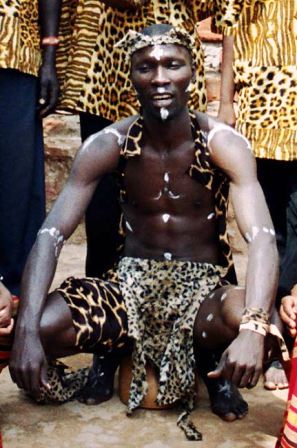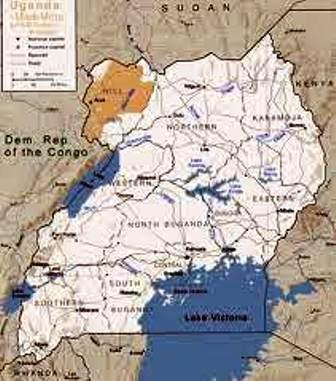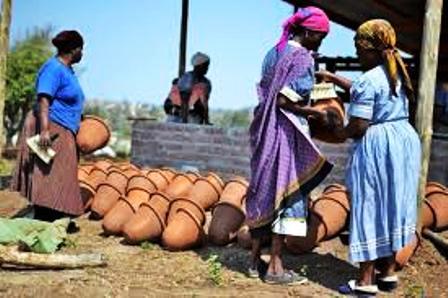Madi people and their Culture in Uganda
Who are the Madi People in Uganda? The Mà'dí people live in the Magwi County in South Sudan, and the districts of Adjumani and Moyo in Uganda.
From south to north, the area runs from the from Nimule(at Sudan-Uganda border) to Nyolo River where the Ma’di mingle with Acholi, Bari and Lolubo. From the east to west, it runs from Parajok/Magwi to Uganda across the River Nile.
Brief history
According to one popular folk tale, the name Madi came as an answer to a question by a white man to a Madi man. When the first white person in the area asked the question 'who are you?', the bemused response was madi, i.e. a person.
This was taken to be the name of the people, which came to be corrupted to the present. Another Ma'di narrative tries to account for the names of some of the Moru–Ma'di group members.
When the progenitors of the Ma'di were pushed southwards, on reaching a strategic location they declared, Muro-Amadri, i.e., "Let's form a settle here". And so they formed a cluster to defend themselves.
This group came to be known as the Moru. A group broke off in search of greener pastures in a more or less famished state, until they found an edible tree called lugba('desert dates' - ximenia aegyptiaca). After they ate some of the fruits, they took some with them.
When the time came to refill their stomachs again, a woman who lost her harvest was heard enquiring about the lugba ri 'the desert dates'.
This group came to be known as logbara but the Ma'di still call them lugban. The final group on reaching fertile grounds resolved and declared ma di 'here I am (finally)'. And these came to be known as the Ma'di.
Demography and Geography
The Madi people inhabit the southwestern part of Torit district where the Nile River makes a sharp bend into Uganda. In Uganda, they are found in west Nile districts of Moyo and Adjumani.
The porous nature of the borders between Sudan and Uganda has made the Madi move and settle freely on either sides of the border during the civil wars in the two countries. The just concluded 22 year civil war sufficiently diminished the number of Madi in the Sudan and most of their villages are now occupied by displaced people from other parts of the South.
Environment, Economy and Natural Resources
Madi territory is hilly and traversed by rivers and streams. The Madi are sedentary agrarian community.
Their economy is based on subsistence agriculture, in which the main crops are sorghum, maize, cassava, groundnuts and tobacco.
In the 1960s, the farming of tobacco was introduced as a cash crop but this was disrupted by war.
The Madi rear small herds of cattle, goats and sheep as well as fowl.
Mythology and History
The mystery of birth tends to puzzle the Madi, whose beliefs are based on reproduction and hence, their origin as a people.
Rabanga is the supreme being responsible for creation. In addition to being a spirit, Rabanga was also regarded as the earth in the sense of ‘Mother Earth’
This was grounded in the logic that everything is born from the earth.
Language

The Madi speak madi tongue. A Sudanic language related to the Moro, Lugbwara, Keliku and Avukaya, which might point to their common origin.Society, Social Events, Attitudes, Custom
The social and political set-up of the Madi is closely interwoven with spirituality and this informs their attitudes and traditions. The society is organized in chiefdoms headed by a hereditary chief known as the Opi.
The Opi exercised both political and religious powers. The rain-makers, land chiefs – vudipi (who exercises an important influence over the land) and the chiefs are believed to retain similar powers even after their deaths. There was a hierarchy of spirits corresponding exactly to the hierarchy of authority as it existed in the society.
Birth
The birth of twins is considered an ill-omen among the Madi attributable to Rabanga.
Twins were regarded as mysterious creatures and in fact the elder of the twins was named Ejaiya meaning ''take him to the bush'' and the younger Rabanga.
Rainmaking
There are more than 45 rainmaking centres in the Madi country. With only two exceptions, rain could be made by the rainmaker by using a special set of stones which, were usually white in colour.
The Madi believe that ‘rain stones’ come with rain from the sky and they are categorised as ‘male’ and ‘female’ stones. The male stones are conical with fairly sharp points while the female ones would be either round or conical but perhaps without sharp points.
The rainmaker could tell which is which without any difficulty. Once the rain stones were discovered, the fact was reported immediately to the chief. They are kept in special pots lest they jump about when it is raining or when lightening strikes.
Judicial System
The chiefs and clan elders exercise judicial powers of settling cases. However, in cases where the suspect pleaded innocence to accusations of stealing or adultery, the witch doctor was consulted.
The witch doctor would take a handful of spear grass and order the accuser and the accused to hold each end of the grass. The witch doctor would then cut the spear grass with an arrow. Whoever was guilty would fall sick and the truth would establish itself through the consequences.
Spirituality and Beliefs
The whole life of the Madi is centred on the belief that their ancestors survived after death as spirits known as ori. It is believed that the ori could intervene directly in human affairs.
The Madi attribute every misfortune to the anger of a spirit and in the event of a misfortune or sickness, they would immediately consult an odzo or odzogo (witchdoctor) to find out which ancestor was behind the ordeal.
Sacrifices were then offered to the particular spirit in order to avert its malign influence on the living.
The powerful families among the Madi bas were believed to have powerful ancestral spirits to help them. ''Babu-garee'' constitutes the whole paraphernalia of the spirits of the dead.
Neighbours and Foreign Relations
The Madi stalk the common borders with Uganda. They neighbour: Acholi to the east, Bari and Lulubo to the north Kuku to the west.
Latest Developments
The end of the first war in 1972 brought some development to Madi land. The opening up of tobacco farms and other agricultural activities had prospects to social and economic transformation.
The concluded long running civil war however forced most of the Madi people to abandon their homes and migrate to Uganda where they are living either among their relatives in Moyo and Adjumani or in refugee camps.
Kenya Culture | Akamba | British Colonialists | Crafts | Cultural Business Meetings | Cultural Communication | Cultural Eye Contact | Cultural Gestures | Gift Giving | Cultural Law | Cultural Music | Cultural Space | Cultural Time | How to Talk in Kenya |Recent Articles
-
Garam Masala Appetizers ,How to Make Garam Masala,Kenya Cuisines
Sep 21, 14 03:38 PM
Garam Masala Appetizers are originally Indian food but of recent, many Kenyans use it. Therefore, on this site, we will guide you on how to make it easily. -
The Details of the Baruuli-Banyara People and their Culture in Uganda
Sep 03, 14 12:32 AM
The Baruuli-Banyala are a people of Central Uganda who generally live near the Nile River-Lake Kyoga basin. -
Guide to Nubi People and their Culture in Kenya and Uganda
Sep 03, 14 12:24 AM
The Nubians consist of seven non-Arab Muslim tribes which originated in the Nubia region, an area between Aswan in southern










New! Comments
Have your say about what you just read! Leave me a comment in the box below.